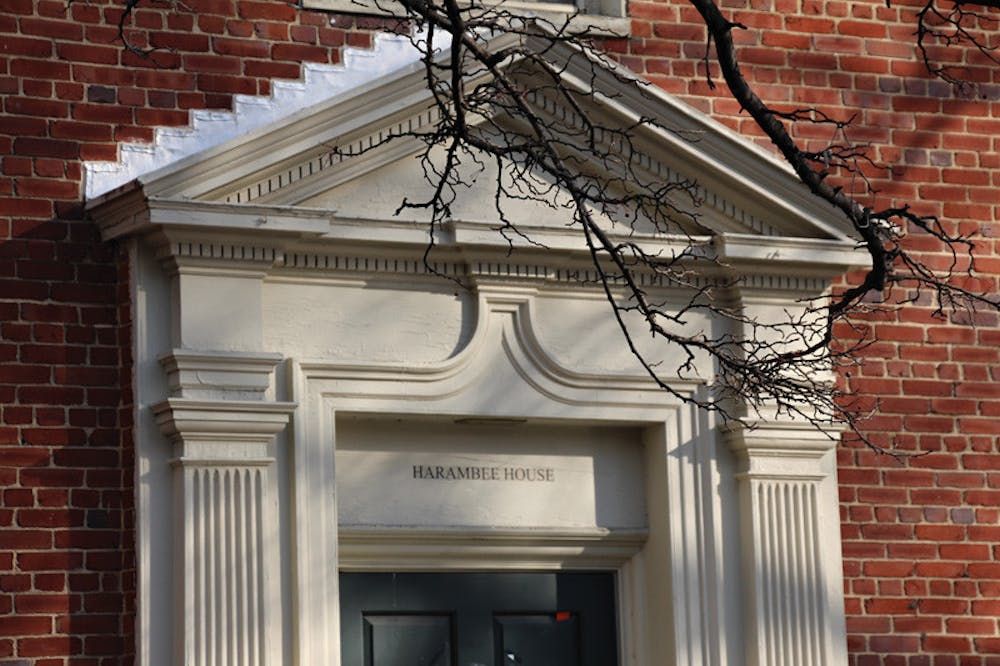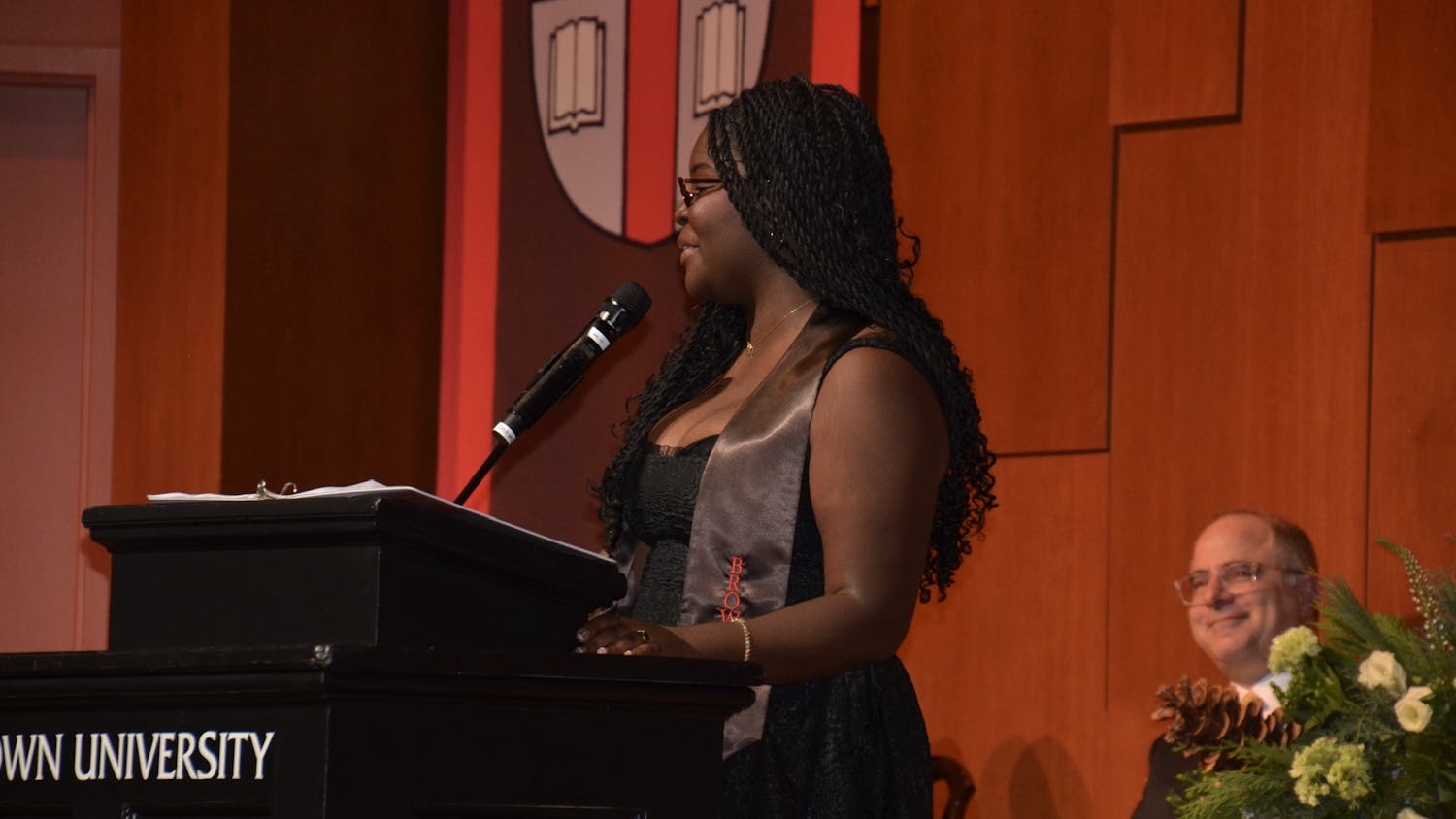Just one year after the University almost revoked the program house status for Harambee House — a living space for those interested in African culture — the group is hosting its greatest number of residents in recent history this semester. With this growth, Harambee has become a focal point for many black students at Brown that offers a safe space on campus, said Elaina Boutte ’15, co-head of Harambee House.
Through the years
Harambee was founded in 1993 after a series of racially charged incidents plagued the University, The Herald reported in 2004.
“Harambee House carried a certain symbolism. It’s like a black family moving into a white neighborhood and people having to deal with your presence there,” Kevin Webb ’92 told The Herald in 2004. “The bastion of white male-dom was being integrated.”
But by the mid-2000s, Harambee began to face difficulties in recruiting the necessary number of members. The house’s status was previously threatened in 2009, when only 11 students planned on living in the house.
Last spring, the Office of Residential Life informed Harambee leaders that they were again below the minimum enrollment requirement for program houses. Within a week, an aggressive on-the-ground recruitment push allowed Harambee to expand from 17 to 41 members for fall 2013, surpassing the 22-member threshold required by ResLife. Harambee leaders hope to increase membership further for next semester, said Ahmed Elsayed ’16, a public relations chair for Harambee.
“It’s bringing people of different cultures and a lot of minorities together in one area where people can come and feel welcome,” said Elsayed. “I think that’s something Brown doesn’t really have.”
A number of black student groups — including the Brotherhood, the League and the Black Student Union — host meetings and other events in Harambee.
“It seems most of the time when there is a black event or a party it will have something to do with Harambee,” said Armani Madison ’16, a member of the Brotherhood and former Herald opinions columnist, adding that student groups’ use of the space has increased as Harambee has grown over the last year.
Positive growth
To accommodate its recent growth, Harambee expanded its leadership, adding six executive board member positions to the previously existing two house-head positions, Boutte said. They focused on building their internal community last semester, hosting a number of member-only events, she said.
“It’s just a nice little community that you can just go to and feel comfortable talking to people about anything,” Elsayed said.
Going into this recruiting season, Harambee leaders hope to take over the independent portion of the house, a goal that would require the house to host over 50 members, Elsayed said. He also hopes the house will garner enough interest to require a waitlist.
“There’s enough minorities at Brown where we should be able to do that easily,” he said. “We’re taking steps early. We’re trying to beat the lottery. We’re trying to make sure people make a decision before the lottery even comes out.”
In recruiting, Harambee leaders have to overcome a lack of information available to prospective members and, sometimes, an inability to find committed recruits, Elsayed said. Many prospective members choose to serve as Residential Peer Leaders instead, Boutte said. To this end, Harambee is hosting its first open house Sunday.
In recent weeks, many people have expressed interest in the house, and Elsayed said he is hopeful going into the recruiting season.
“People want to come to Harambee because they feel that sense of support,” he said.
‘Nice to come home’
As it has grown, Harambee has faced a number of issues, including a lack of appealing space and funding problems.
“The place is drab,” said O’Sha Lundan Williams ’16, a public relations chair for Harambee. “People don’t want to live where they can’t see themselves studying, or see themselves cooking or see themselves eating.” House members launched an initiative last spring to renovate spaces in the house, but it was tabled due to costs and the focus on recruitment.
Williams said she hopes to revamp the renovation effort this semester by painting the house’s basement, allowing members to tag the walls and personalize the space.
House leaders also plan to build a bench outside the building and create artwork for the building, Boutte said.
“We don’t want to do too much because we don’t want to deplete the funds,” she said. “We basically started out with nothing, so we wanted to leave something for people next year.”
The house does not receive funding from the University and has difficulty soliciting funding from alums, she said.
Boutte said the house raises most of its funding from dues, but acquiring funding for projects is difficult because Harambee’s dues are lower than in most other program houses.
Despite some structural issues, Williams said she has ultimately loved living in the house for its community.
“In most of my classes, I’m one of one or one of two black people. It’s just nice to come home to people who understand my culture without me having to explain it to them,” Williams said. “If you want to be able to come home to plantains frying and you’re Jamaican, then Harambee’s the place to be.”
This story originally misstated the name of one of the house heads of Harambee House. Her name is O’Sha Lundan Williams, not O’Sha Lundan.

ADVERTISEMENT




